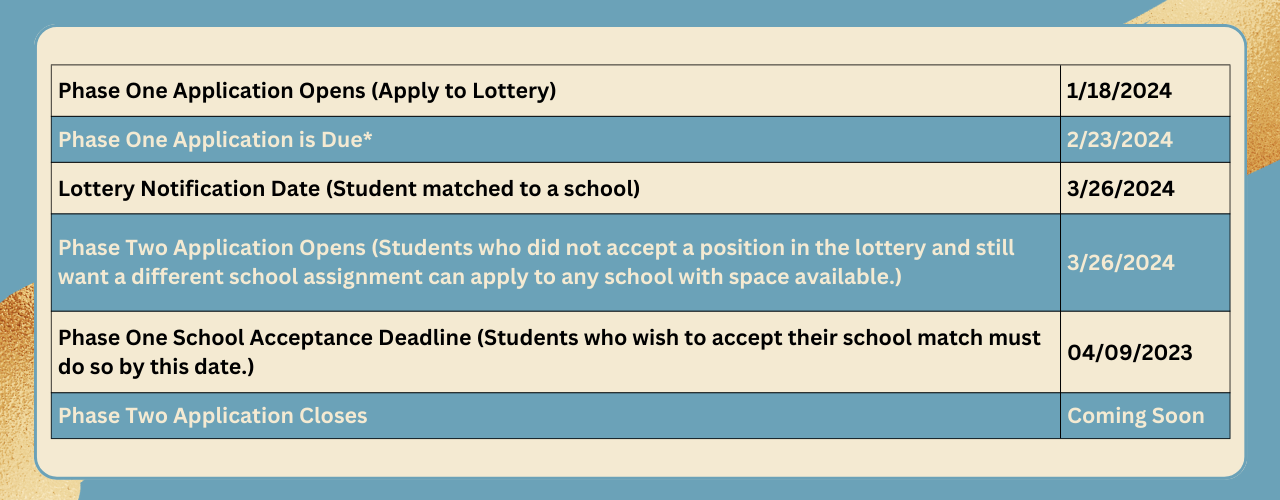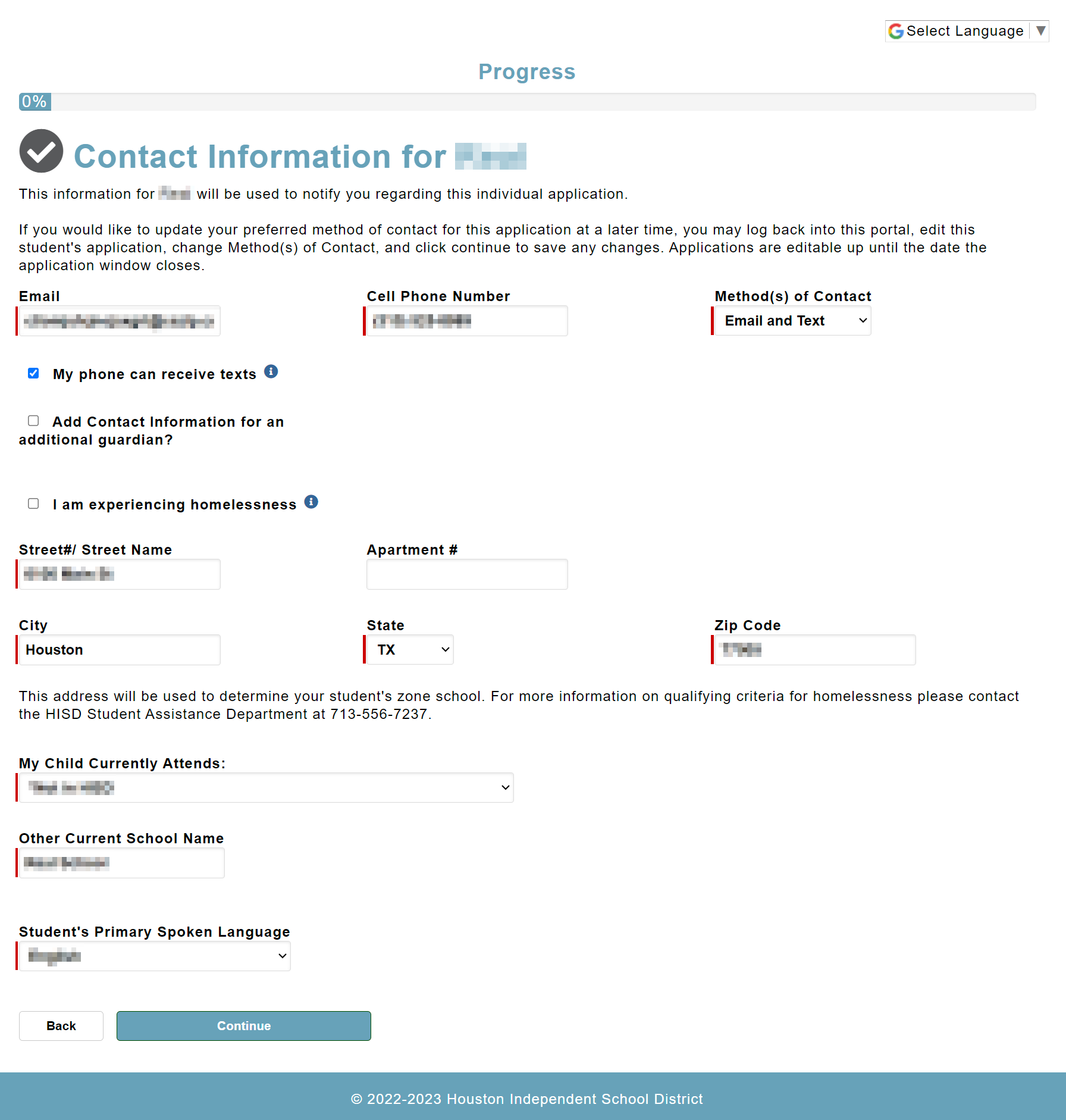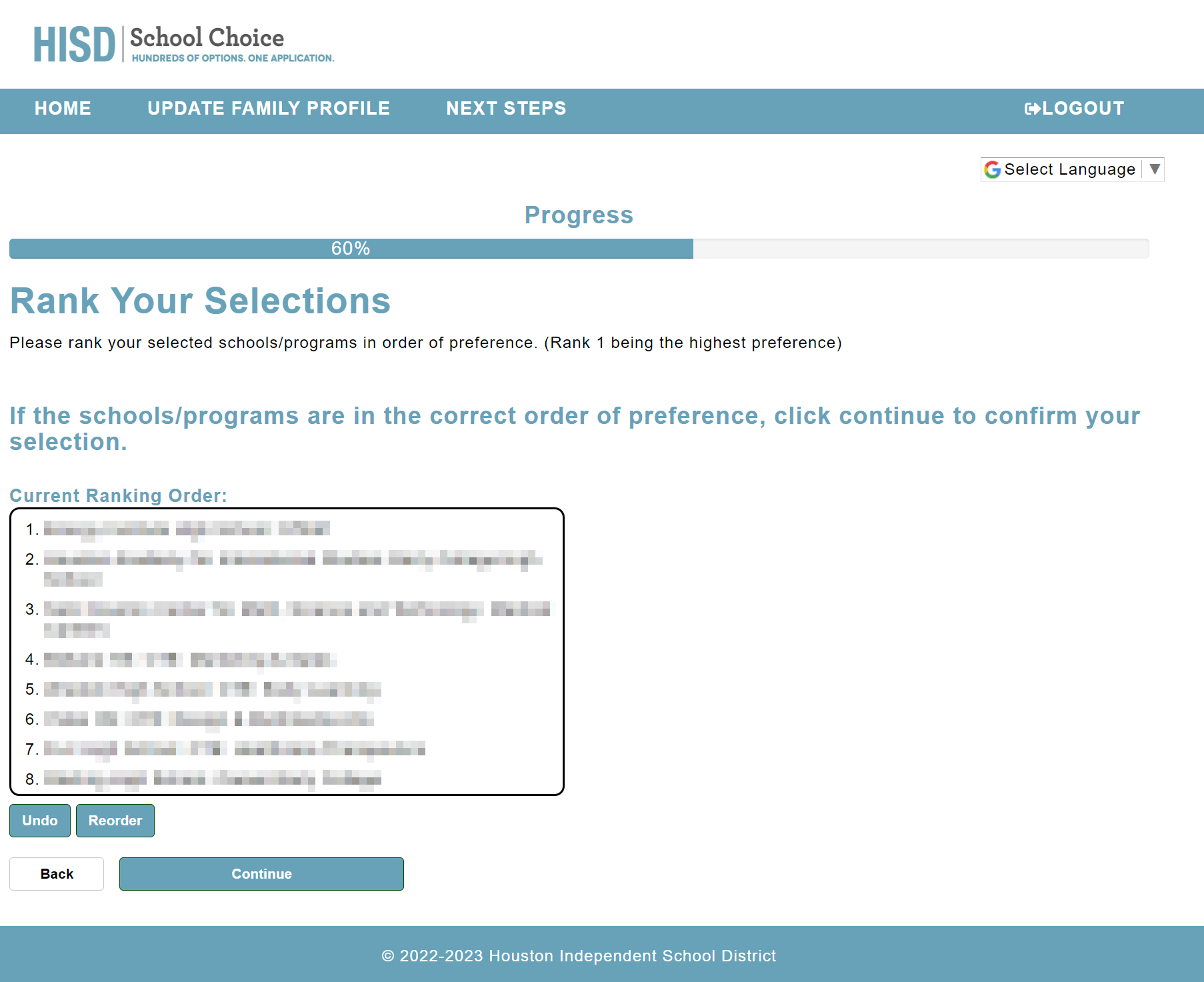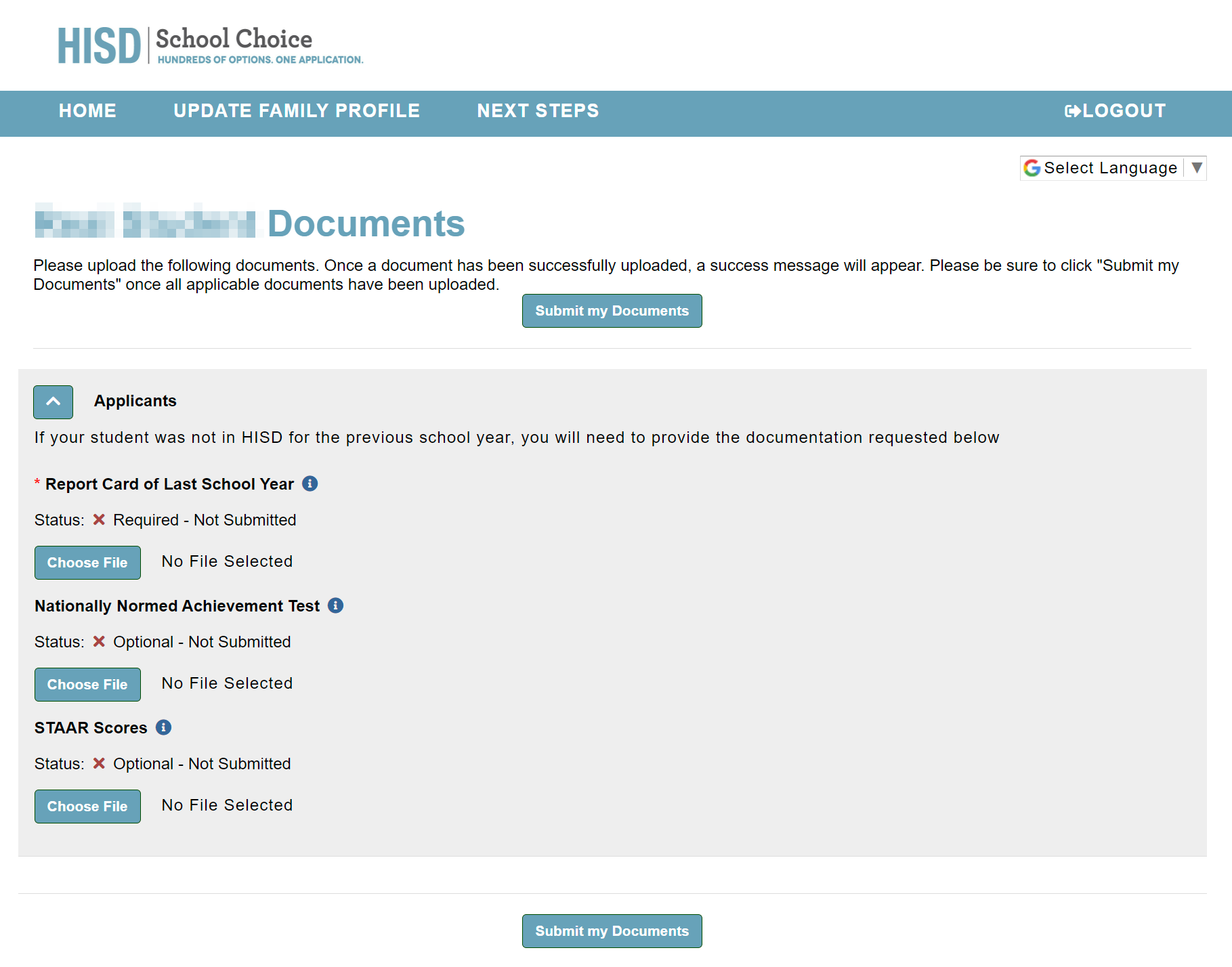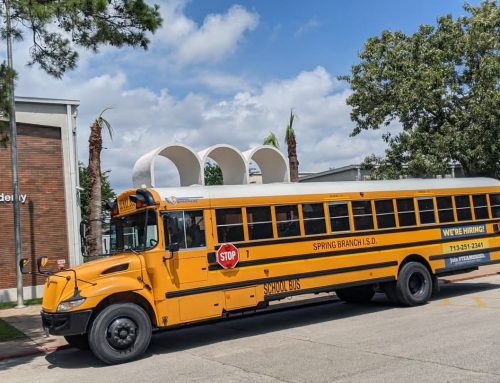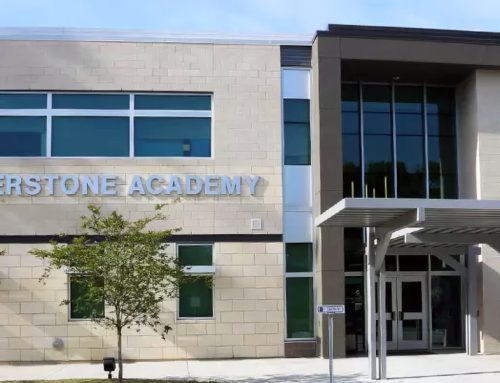What are Magnet Schools in Houston ISD?
Houston Independent School District (HISD) is the eighth largest public school district in the U.S., with nearly 190,000 students across 274 schools. Of those schools, 120 are considered Magnet Schools. Magnet schools, known as “magnets,” aim to attract specific types of students from across the district to their programs.
Houston ISD Magnet School Basics
- Magnet schools focus on a special theme like advanced academics, fine arts, or foreign languages.
- Any student can apply to attend an HISD magnet school, regardless of where they live.
- Magnet schools receive additional funding to fulfill their special programs.
Unlike private schools, magnet schools do not get to pick-and-choose which students ultimately attend; all qualified students have an equal shot of acceptance, and students are chosen based on a lottery system.
What is the Houston School Choice Lottery?
Applications to HISD’s most popular magnet schools always outnumber the available seats. For example, more than 600 students usually apply for about 50 seats at River Oaks Elementary, HISD’s most popular elementary schools. In order to most fairly determine which child gets admitted, the district uses a computerized lottery.
Generally speaking, every qualified applicant (see more about qualification requirements below) has an equal chance of admission. This means that, regardless of how many programs you apply to, there is a chance that your child won’t be accepted to any of them. This is no reflection on your child; it’s just how the system works.
Should you apply to multiple magnet schools?
Yes! To maximize admission chances, apply to as many schools as possible, and apply to less-selective and less-coveted schools in addition to your top choices. In the 2023-2024 School Choice Lottery, students may apply to up to 10 schools including 5 vanguard programs.
Don’t get your heart set on one school; you’ll only set yourself up for disappointment. Some of Houston’s best elementary schools accept fewer than 10% of magnet applicants, so be realistic. Apply to top schools, but also include a few safety schools that are still appealing for your child. When choosing safety schools, consider yield as well as acceptance rate – the lower the yield, the greater the chance a waitlisted student will eventually be offered a spot.
Of course, if magnet schools are only one of the options you’re considering, you don’t necessarily have to put effort into maximizing the odds of acceptance. If you’d be content with your zoned neighborhood school (you can find yours here), or if you’re looking at private schools as well, it’s perfectly alright to apply only to the one or two magnet schools where you feel your child would excel. Just bear in mind that admission is far from guaranteed, and make sure you’ve picked a good backup school.
How do you rank your schools?
When applying, rank HISD magnet schools from most to least preferred. Acceptance into a higher-ranked school removes you from the waitlist of lower-ranked schools. Therefore, it’s important to think carefully about which schools are the ones you most want your child to attend.
We recommend that you begin looking at possible schools approximately one year before your child would enroll – August 2023 for a 2024 enrollment, for example. This year in advance will give you and your children plenty of time to consider the options before the application period opens at the end of September. While considering prospective schools, we encourage you to check out our profiles of HISD’s top magnet schools as well as our upcoming analysis of the top HISD magnet programs for 2023.
HISD provides several resources to help parents choose the best schools for their children. On School Choice Thursdays (or Magnet Thursdays), which are held throughout October, November, and early December, all Magnet Campuses offer tours to interested parents, with both morning and afternoon tours available. During the same time frame, parents can also attend HISD-hosted Magnet Open Houses on select Saturdays. Scheduling and location information for these events is typically made available on the HISD site and in local news media close to the time of.
Parents may apply to up to 10 magnet schools per student in HISD, which is twice as many as it was a few years ago. To maximize the odds of admission, it’s a good idea to select 2-3 top-tier selective schools, such as those profiled by the Houston School Survey, and use the remaining application slots for mid-range and safety schools.
Rank Order Matters
The order in which you rank schools is crucial. You will be asked to rank your choices from one to ten (if you apply to ten schools). If your child is admitted to a given school, their applications for schools which you ranked lower will be automatically withdrawn. This means you must take care to rank top-tier choices first, followed by mid-range and safety schools. Within each of these three clusters, we recommend ranking schools according to how well the program matches your child’s needs, rather than by probability of admission.
When selecting your top-choice schools, there are several considerations to bear in mind. The foremost, of course, is whether your child will thrive in a particular program. Self-motivated and creative students often excel in Montessori programs, while those with specialized interests find magnet programs targeting specific subject areas beneficial, like STEM, world languages, and the fine arts. Other factors to take into account include location, budget, single-sex vs. coeducational classroom settings, and the availability of advanced curricula such as IB and AP (all of which are discussed in our page on choosing a new school).
Vanguard School Application Limits
As you are choosing your schools, you will see one term come up again and again – Vanguard. This title denotes HISD’s programs for Gifted and Talented (G/T) students. Many of HISD’s best schools are dedicated Vanguard magnets*, meaning that students must be certified by HISD as G/T before they can enroll. As detailed under “Determination of Qualification” below, Vanguard applications require extra materials and testing to identify a student as G/T. (Please note, for the upcoming 2024-2025 academic year, the deadline to register for G/T testing was December 8, 2023, which has now passed.)
Unless your child is already registered as G/T with HISD, we recommend that you select more non-Vanguard than Vanguard schools as top choices. After all, as HISD points out on their website, “If you apply to 5 Vanguard programs, and your student is not ultimately identified as Gifted and Talented, your student will not be considered for any of the Vanguard programs chosen.”
*It is important to note that dedicated Vanguard magnets are different from Gifted and Talented Neighborhood schools. Most HISD magnet schools have G/T Neighborhood programs to serve the needs of G/T students, but G/T certification is a condition of enrollment only at dedicated Vanguard magnets. If you are interested in the G/T Neighborhood option for your child, or if you want to know more about the difference between dedicated Vanguard magnets and G/T Neighborhood schools, click here.
When do you apply?
To have any chance of admission to a desirable HISD magnet school, you must apply by the the end of Phase 1, which at the time of this article’s publishing was February 23, 2024 for the 2024-2025 academic year.
Phase 1 — The only phase that matters
Phase 1 magnet applications open on January 18, 2024, and close February 23, 2024. HISD residents (or the children of active HISD employees who live outside the HISD boundaries) who apply at any time during the Phase 1 window have an equal chance in the admissions lottery for each school, with the exception of those who have siblings who are already enrolled in a given program (see “The Admissions Lottery” below). All students who meet the qualifications for a given program will be entered into the lottery if there are more applicants than available seats.
All popular schools will be filled up with long waiting lists at the end of Phase 1. You have absolutely no chance of getting into a popular school if you miss the Phase 1 deadline. Do not miss the Phase 1 deadline. The results of the Phase 1 lottery will be announced on March 26, 2024.
Phase 2 — Late applicants
Phase 2 begins in late March 2024 and lasts until at least through the end of May – as of now, the Phase 2 deadline is “TBA.” Phase 2 is essentially the phase for latecomers. Once the Phase 1 applications from HISD residents have been processed, Phase 2 applications from HISD residents will be considered in the order in which they are received by HISD. In other words, Phase 2 admissions are carried out on a rolling basis; seats are offered as they become available, but only after all Phase 1 applicants have received their offers of admission or their spots on waitlists. This is why it is in the absolute best interest of HISD-zoned students to apply during Phase 1.
Phase 3 — Out of district applicants
Phase 3 takes place throughout June and July, and it is the only time during which the applications of eligible, out-of-district students are considered – even if applicants who live outside of HISD apply during Phase 1 or 2, their applications will not be considered until Phase 3. Even then, HISD residents still take priority during Phase 3, as out-of-district applications are not processed until there are no remaining applications from eligible, in-district students.
The bottom line for HISD residents is that you should consider the end of Phase 1 your application deadline; as long as you get your application in by that early-December cutoff (and consider your magnet program rankings carefully, as described above), this will maximize your chances for a spot in the school of your choice.
How do you submit your application?
To apply to magnet schools in Houston, HISD strongly recommends you create an account through the HISD School Choice online portal. Though students are allowed to apply via US Mail with a paper-copy version of the application, the online application as the easiest and most efficient application method, as it allows applicants to re-rank their magnet school choices prior to the Phase 1 deadline in February, view their application status online, upload any required documentation, and track their position on wait lists. It is important to note that returning online applicants should apply with the same online account they have used in the past.
To apply for each of your chosen magnet programs, simply fill out a form for each selected school. The application form is quick and straightforward, especially if you use the online version. It consists mostly of basic personal information about the prospective student, the student’s guardian(s), and any siblings who are already enrolled in HISD. Vanguard applications also include a space to designate recommending teachers.
Students who attended an HISD school for the entire preceding school year and who are currently enrolled in HISD are not required to submit any documents on top of the application for each school. If your child will be a first-time HISD student, however, you will need to provide all of the required documentation. Every application form will list the necessary documents for that particular school, but the requirements for a given grade level are standardized throughout the district. These documents can be uploaded online, sent by U.S. mail to the Office of School Choice, or dropped off in person at the Office of School Choice or to individual schools’ magnet offices.
Required documents may include:
- Proof of age, ideally a copy of your child’s birth certificate (for applicants to PreK or kindergarten)
- Proof of HISD residency, i.e. a utility bill
- The first grading period of the current year’s report card (for applicants to grades 1-12)
- Last year’s final report card (for applicants to grades 1-12)
- STAAR scores and/or Stanford scores (for applicants to grades 6-12)
Many schools only require the documents listed above, but some, particularly Vanguard schools, may require additional materials such as Parent or Teacher Recommendation Forms. Furthermore, if your child is applying to a dedicated Vanguard magnet and they have not already been identified as Gifted and Talented (G/T), you will also need to have them tested for G/T identification, which is a requirement for enrollment at a Vanguard magnet school.
It’s a good idea to start gathering your supplementary documents before beginning the application form; that way, it’s one less thing to worry about. It’s especially important to start early if your child needs a teacher’s recommendation, since teachers tend to look more favorably on recommendation requests when they’re given at least 3 weeks’ notice.
Is my child qualified to attend all schools?
It’s not enough just to apply to a school. Parents must also pay attention to the school’s theme and qualification requirements. HISD currently lists the following themes:
- Academic Early College
- Career Early College
- College & Career Readiness Programs
- College Preparatory
- Dual Language Programs
- Fine Arts and/or Performing and Visual Arts
- International Baccalaureate
- International Studies
- Montessori
- STEM/STEAM
- Vanguard (Gifted and Talented)
- World Languages
Some of these programs have additional requirements that students must meet before their application will even be considered in the lottery. For example:
- River Oaks Elementary is a Vanguard Program, meaning that every student in that program is considered Gifted and Talented. Students who do not meet the district’s qualification of gifted and talented will not be admitted. Failing to qualify as gifted and talented is the number one reason that students don’t qualify for an HISD magnet school.
- Mandarin Immersion School is a Dual Language Program where half the day’s instruction is in English and the other half is in Chinese Mandarin. As such, students do not need to know any Chinese to apply to kindergarten or first grade. However, if they apply to any higher grade, they must first demonstrate a level of Chinese knowledge that would be comparable to their peers in the grade to which they’re applying.
- Kinder HSPVA is a Fine Arts Program where every student must be talented in an art like creative writing, instrumental music, theatre, visual arts, or vocal music. Every student must audition and demonstrate their outstanding artistic ability before their application will be considered in the lottery.
Only student who meet a school’s minimum qualification requirements will advance to the lottery.
For most students, the magnet qualification process should not be a matter of concern – if your child is well-behaved, has relatively good attendance, and maintains a high C average or better, it should be nothing to worry about. However, if your child has had trouble with grades, discipline, or truancy, it may be wise to consult the minimum score table and cross-reference your child’s estimated matrix score to ensure that your child is not applying for programs from which they would be automatically disqualified.
Gifted and Talented Qualification Testing Deadline
Students applying to designated Vanguard magnets are judged by the same rubric for attendance, conduct, and academic performance, but they must also meet the additional qualifying requirement of Gifted/Talented status.
HISD uses two matrices to determine G/T identification: one for applicants to kindergarten and one for current K-12 students.
If your child has not already been identified as G/T in HISD, G/T testing must be requested before the Phase 1 application deadline; HISD students must test at their current school, and students who are not yet enrolled in HISD must test at the HISD school they are zoned to attend. The deadline to request G/T testing this year is December 8, 2023. More information about G/T testing for application to Vanguard magnet programs can be found here.
Since HISD has only one window for G/T testing, only students who have been identified as Gifted and Talented before the Phase 1 deadline in February are eligible for enrollment in Vanguard magnet schools.
What are my chances of getting in?
According to General Academic’s research over the last 10 years, only about 1/3 of all HISD schools are desirable, meaning parents actually want to send their kids there. While you can typically apply to any grade, your chances are greatest during a prime entry year, the year when most students start a particular school and when the most seats are available. For these prime entry years, your chances of admission to a desirable school are generally:
- Elementary Schools (prime entry kindergarten, 1st grade) – 20%
- Middle Schools (grade 6) – 30%
- High Schools (grade 9) – 25% for desirable high schools.
However, if you have a 20% chance at 5 different schools, and if you apply to all 5, you have a much higher probability of making it into at least one desirable school.
Better Chances of Admission for Siblings
Houston magnet school reserve 25% of available seats at the prime entry level – i.e. kindergarten, sixth grade, or ninth grade – for siblings of currently enrolled students who will still be enrolled when the applicants matriculate. If the number of sibling applicants is less than or equal to the number of allotted seats, then all of them will be accepted, and any unfilled allotted seats will be re-assigned to the general lottery. Frequently, however, the number of sibling applicants exceeds the allotted number of spaces. When this happens, siblings are placed in a lottery for the available spaces, and those who are not awarded spaces end up at the top of the waitlist for the magnet program their sibling attends.
The majority of available spaces are then filled in the general lottery. All qualified, in-district students who applied in Phase 1 and who have not already been placed will be considered in this lottery. At many of Houston’s top-tier magnet schools, the general lottery will yield a waiting list of several hundred students. Students’ standing on the waiting list is determined by the same random number and sorting algorithm that governs admission – for instance, if there are 75 available spots, a student who was assigned the number 78 will be third on the waiting list.
As described above, late applicants and applicants from outside HISD are considered on a rolling basis in Phases 2 and 3, respectively, after all HISD-resident applications from Phase 1 have been processed. While the odds of enrollment in the most desirable magnet programs are very low here, spots in certain programs will still be available because not all of the students selected in the sibling lottery and the general lottery will accept their offers of admission, and because waitlisted students may choose to go elsewhere.
Eligible applicants who applied by the end of Phase 1 will be notified of their children’s status by the end of March.
What happens if I’m admitted? Waitlisted?
If you are accepted during phase 1, you have two weeks (10 business days) to log in and accept the offer before it is withdrawn. If you are waitlisted, you must wait to see if a spot opens up; the district will to continue to offer seats as they become available, which happens when accepted students reject their offer. Students can move off the waitlist anytime before the first day of school.
By the end of March, you will have received notice of your child’s ranking from every school to which you applied. There are two possible scenarios at this point: either your child has been accepted to one school (in which case applications to schools ranked lower on your list will have been dropped), or your child has been waitlisted at every school.
Historically, about the first 40 students on the waitlist have a decent chance of getting into a larger middle or high school, while a smaller elementary school may seen just 10 or fewer students move off the waitlist.
At some of the less sought-after middle schools, the first 80 or more waitlisted students are likely to be admitted, and many high schools will ultimately offer admission to more than 100 waitlisted students. So it’s quite reasonable to hold out hope for eventual admission to a waitlist school. However, it’s also wise to weigh other options during this time, especially if your child is in elementary school or is ranked below the probable admission range for middle and high schools.
If your child has been accepted into a program, congratulations on your good luck!
Upon acceptance to a magnet program, you will have two weeks to accept your student’s offered seat by following the “Accept” link the the offer of admission, and to submit the following documents:
- Proof of age, for applicants to PreK or kindergarten (ideally a copy of your child’s birth certificate)
- Applicants to PreK3 or PreK4 must provide proof of age 3 or 4 by September 1.
- Applicants to kindergarten must provide proof of age 5 by September 1.
- Proof of HISD residency, i.e. a utility bill
- A signed entrance agreement, which will be provided by the school.
Should you accept an offer to school that is not your top choice?
Of course, it’s possible that the school to which your child was accepted wasn’t your first choice, and that you’re still on the waitlist for a school you ranked higher when you applied. If you’re hoping for an eventual offer of admission from one of your waitlisted schools, should you still accept the offer you already have?
Actually, yes. In a stark contrast to the college admissions process, school commitments are non-binding during the acceptance period. If you receive an offer from a school that you like better, simply tell the original school that you’re accepting a different offer and register your child at the second school. In this situation, it’s very important that you notify the original school and receive confirmation from them before accepting the new offer of admission. If you attempt to accept an offer of admission while you are already registered in HISD’s online system as having accepted an offer at another school, the system may reject your acceptance and automatically remove your child from all accepted students lists. With that being said, as long as all of the necessary paperwork is filled out by the 2-week deadline, you’re fine.
For offers that are extended more than two weeks after the initial round of acceptances at the end of March (which would apply to Phases 2 and 3 applicants), parents will have one week to accept the seat, submit the required documents, and sign the entrance agreement at the school to secure the seat.
When you’ve completed registration, you and your child can have a wonderful summer and look forward to a great education in the fall!
More Houston ISD Magnet School Resources
HISD provides very informative “At-A-Glance” documents that cover some Frequently Asked Questions, such as “How to Get Started with Enrollment,” and “What Happens After an Enrollment Application is Submitted,” among others.
If you have any unanswered questions, check out HISD’s School Choice FAQ page. Updates may also be posted under the Magnet/School Choice category of the HISD News Blog.
If you have school-specific questions, it may be best to contact the school’s magnet coordinator directly.
For other questions that cannot be answered by the existing online resources, you can ask a school magnet coordinator or contact the HISD Office of School Choice.
For more information about individual schools’ magnet programs, we encourage you to read our school profiles and visit schools’ websites. For more information about what kinds of programs are available, you can also check out HISD’s overview of program types.

